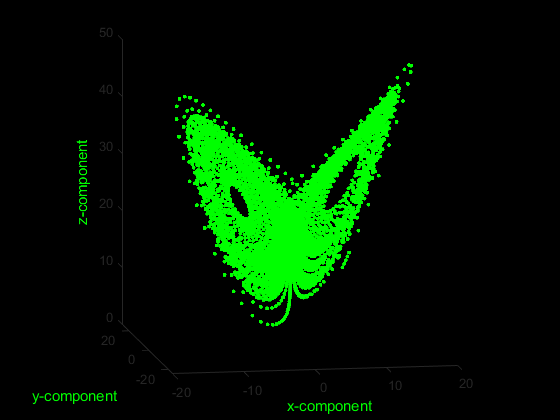Example 2: (Fine-Grained) Permutation Entropy
Import the x, y, and z components of the Lorenz system of equations.
Data = EH.ExampleData('lorenz');
from matplotlib.pyplot import fig, scatter, axis
fig = figure(facecolor='k')
ax = fig.add_subplot(111, projection='3d')
ax.set_facecolor('k')
ax.scatter(Data[:,0], Data[:,1], Data[:,2], c='g')
ax.axis('off')

Calculate fine-grained permutation entropy of the z component in dits (logarithm base
10) with an embedding dimension of 3, time delay of 2, an alpha parameter of 1.234.
Return Pnorm normalised w.r.t the number of all possible permutations (m!) and the
condition permutation entropy (cPE) estimate.
Z = Data[:,2];
Perm, Pnorm, cPE = EH.PermEn(Z, m = 3, tau = 2, Typex = 'finegrain',
tpx = 1.234, Logx = 10, Norm = False)
>>> Perm
array([-0. , 0.8687, 0.9468])
>>> Pnorm
array([ nan, 0.8687, 0.4734])
>>> cPE
array([0.8687, 0.0781])